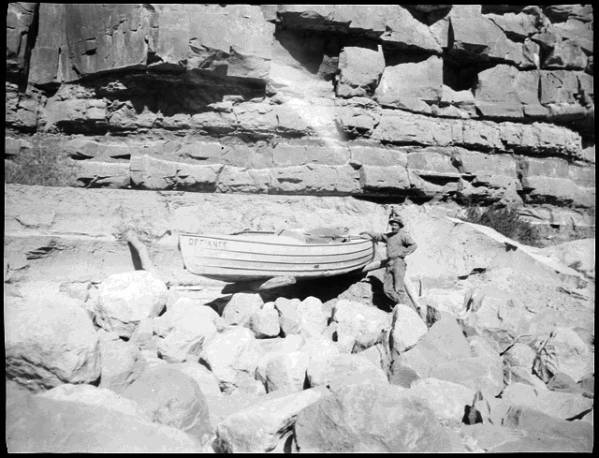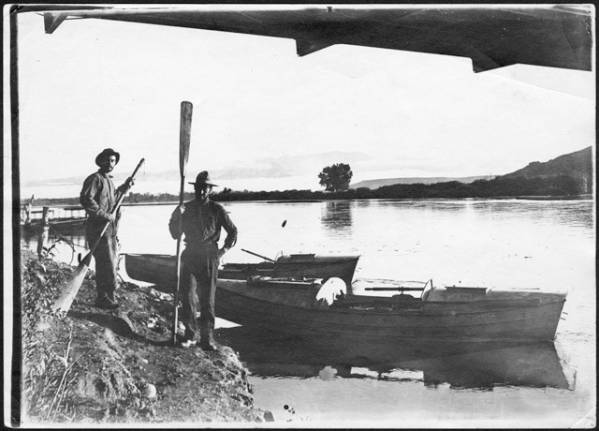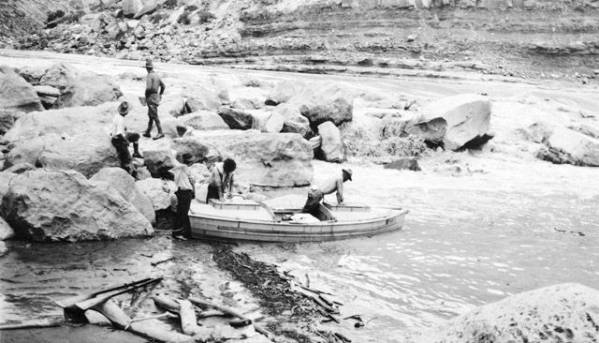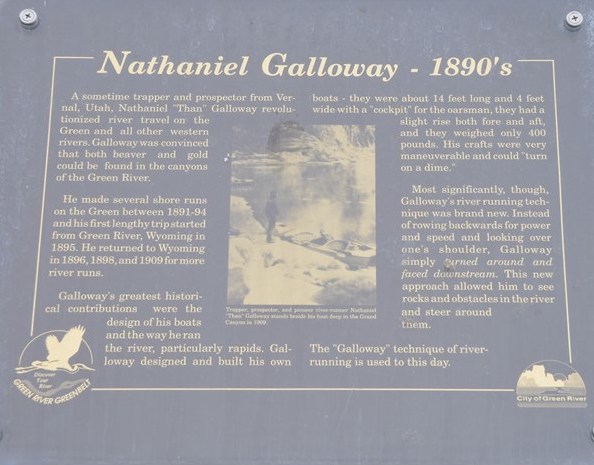Nathaniel Galloway – Pioneering White Water Maverick

We’ve said before that at Outdoor revival we love water, kayaks and generally anything that will get us wet and we know that there’s a lot of people in the world that feel just the same and there’s lots of you that love to read about people from the past that have paved the way for us, bringing us knowledge, techniques and refinements that we use today.
This article is about Nathaniel Galloway who was born in Lehi, Utah in 1853 and by the late 1880’s he was occupied as a trapper in Vernal in Utah. He was surveying the rapids in the Green River and speculating on the possibility that there were two types of gold in the river; one being beaver pelts, which were extremely valuable, and secondly the precious metal.
Having no boating experience, Galloway started trying to run the rapids of the Green River using John Wesley Powell methodology. Powell had run the Green and Colorado Rivers in 1869 and 1871 respectively without a problem. His boats were heavy with deep hulls and the oarsmen faced upstream, rowing with a conventional technique by using their backs and legs to power through the rapids.

Galloway knew that to claim the riches that he suspected lay in the Green River; he would have to learn how to man a boat. Around 1891 he started taking one of the boats designed by Powell out onto the river. He quickly came to realize that this would not work for him; he was alone in the boat, he could not see where he was going, his vision was limited to what he could see over his shoulder, and the boats were just too heavy.
He quickly realized that he needed to change the way of riding the rapids, thus a new design of boat and a new way of manning the boat was born. Firstly he tried simply turning around and facing forwards, but he quickly realized that the boats that he was using, Powell’s design, was too cumbersome. He was unable to put the same amount of power into a push stroke with the oars that he could when facing upstream and using a pull stroke. He came to the conclusion that trying to power through the water was futile and changed the way of viewing the rapids. Rather than fighting the current, he decided to start using it to his advantage.
Galloway developed a technique where he faced downstream so he could clearly see the rapids in front of him, allowing the current to carry him into the rapid. He then pulled strongly upstream, using the angle of the boat to the current to change direction. The term given to this type of maneuver is ‘ferrying.’

Perfecting this type of rowing through the white water called for a different type of boat design. He developed the Galloway design that had a flat hull but with a rocker shape from bow to stern and was very lightweight. This type of boat allowed him to perfect, what is still known as to this day, the Galloway method for shooting rapids. These boats became extremely popular and were the first choice for people intending to cross white water until the rubber duck made an appearance in the mid to late 1940’s.
In 1896 Galloway sailed the length of the Green River in a boat of his own design and using his method of crossing the rapids. The following year, he took to the Colorado River to underscore the reliability of his boats and his new method of shooting rapids. By this time orders were coming in for his new boats. This time, it seems he gave up trapping and turned to the river for his living.
Shortly after his successful trip down the Colorado, Galloway was employed by the Hoskaninni Mining Company as a river guide and hunter. Through this connection, he met one of the company’s financiers, Julius Stone, and they became friends. Stone asked Galloway if he would lead a trip down the Colorado River. This trip would be different as it was not for any reason other than pleasure, a first in the world.

Galloway built four boats in Chicago and, in 1909, they were shipped to the Green River in preparation for the trip. Galloway was to lead the trip and to accompany him were Julius Stone, C C Sharp, Seymour Dubendorff and the photographer Raymond Cogswell. The trip started on the 12th September 1909, and they drifted into the Needles in California on the 19th November 1909. The group experienced no serious mishaps during the trip, and the only capsize was by Dubendorff in one of the rapids. This rapid was later named the Dubendorff Rapid in his honor.
Nathaniel Galloway died in 1913 having not only inspired an entirely new method of shooting rapids, but he is also credited with opening up an entirely new form of leisure activity, that of white water rafting. This form of river sport is extremely popular still to this day.
Outdoor Revival – Reconnecting us all to the Outdoors
